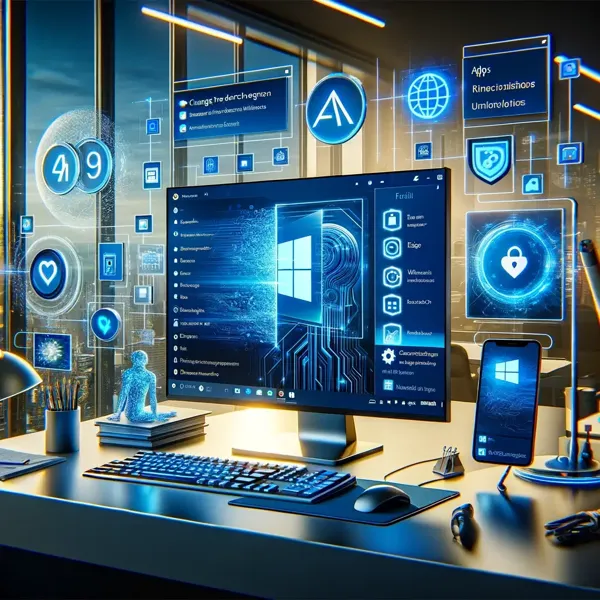In a move that’s set to redefine the user experience, Microsoft is gearing up to roll out substantial updates for Windows 11 in 2024. With an eye on the future, these updates are expected to infuse the operating system with cutting-edge AI functionalities and ensure compliance with the Digital Markets Act, marking a significant leap forward in digital innovation and user autonomy.
Embracing the Digital Markets Act with the First Major Update
Slated for release in February, the first major update of the year is poised to bring Windows 11 in line with the European Union’s Digital Markets Act (DMA). This landmark regulation seeks to even the playing field in digital marketplaces, and Microsoft’s update is a testament to their commitment to these ideals. A standout feature, as highlighted by sources like Windows Central, is the newfound freedom for users to swap out the default Bing search engine in the Windows Start menu for alternatives like Google or other services. This shift not only champions consumer choice but also heralds a new era of digital inclusivity and flexibility.
But that’s not all. The update promises to usher in a wave of enhancements aimed at elevating user control and customization. Among these, users can anticipate the option to remove previously integral components such as the Edge browser, Cortana voice assistant, and the native camera and photo apps. Moreover, the update is set to revolutionize input methods by enabling pen support across all text fields, broadening the horizons for creative expression and productivity.
Anticipation Builds for Windows 11 24H2
Beyond the initial update, Microsoft has its sights set on an annual feature release known as Windows 11 24H2. The buzz around this update centers on its focus to significantly expand AI capabilities within the operating system. While specifics are still under wraps, the promise of enhanced AI integration suggests a transformative shift towards a more intuitive, efficient, and personalized computing experience.
As 2024 unfolds, these updates to Windows 11 are not just about adding new features; they represent Microsoft’s vision for a future where technology adapts to the needs and preferences of its users, fostering an environment of innovation, choice, and accessibility. With these changes on the horizon, Windows 11 users have much to look forward to, as their computing experience is set to become more versatile, user-friendly, and aligned with the evolving digital landscape.
A Leap Towards Seamless Integration
Another exciting frontier that the 2024 updates are set to explore is the seamless integration of Windows 11 with a wider ecosystem of devices and services. This means better synchronization between PCs, mobile devices, and even smart home gadgets, creating a unified user experience across all platforms. Microsoft’s push towards a more interconnected tech environment suggests a future where Windows 11 acts not just as an operating system, but as a central hub for digital life. Whether it’s through enhanced cloud services, improved compatibility with third-party devices, or more intuitive cross-device functionalities, the aim is clear: to make life easier and more connected for users around the globe.
As these updates come to fruition, Windows 11 is shaping up to be more than just an operating system; it’s evolving into a comprehensive platform that anticipates the needs of its users, offering them a more integrated, secure, and personalized computing experience.
















